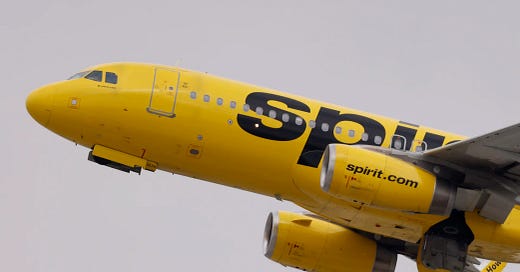Spirit Airlines has filed for Chapter 11 bankruptcy protection, marking the first major U.S. airline to do so in 13 years. The budget carrier, known for its ultra-low-cost fares, has struggled with financial losses, debt, and failed merger attempts.
Why Spirit Filed for Bankruptcy
Financial Woes: Spirit hasn’t turned an annual profit since 2019. It lost $336 million in the first half of 2024 and has accumulated $3.6 billion in debt.
Failed Mergers: A $3.8 billion deal to merge with JetBlue was blocked by a federal judge and earlier talks with Frontier Airlines also fell apart.
Rising Costs: The airline aggressively expanded after the pandemic, taking on debt to add capacity. However, competition and rising operating costs hurt profitability.
What Happens Next?
Spirit has reached an agreement to restructure $1.64 billion of its debt, cutting $800 million. The company is confident it will emerge from bankruptcy quickly, following in the footsteps of airlines like American and United, which successfully reorganized in the past.
Day-to-Day Operations Unchanged: Customers can still book flights, and tickets, credits, and loyalty points remain valid.
Support from Bondholders: The bankruptcy plan has backing from a majority of its creditors, which could attract private equity investment to stabilize the airline.
Spirit's Business Model and Challenges
Spirit is famous for its no-frills approach, offering low fares by maximizing seating capacity on its fleet of 213 Airbus jets.
The company employs over 21,000 people, including 3,400 pilots and 5,800 flight attendants.
Despite its efforts, Spirit has only had one profitable quarter since the pandemic, losing over $2.5 billion in the past 4.5 years.
Passengers shouldn’t worry about canceled flights. Spirit has assured that its signature yellow planes will keep flying as the company works through its financial issues.Spirit hopes to emerge as a leaner, more sustainable airline. Analysts believe the restructuring could improve its financial health and even make it attractive to private investors. For now, the budget airline remains committed to providing its low-cost travel options while navigating its path through bankruptcy.





